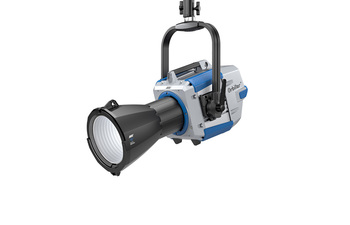ARRI’s Orbiter provides the night light for “All Russians Love Birch Trees”
While working on “All Russians Love Birch Trees,” DP Juan Sarmiento G. learns to appreciate the light quality and other features of ARRI’s Orbiter for the first time.
From October to December 2020, the filming of “All Russians Love Birch Trees” took place in Germany and Israel. The feature, an Augenschein production, is an adaption of Olga Grjasnowa’s bestselling novel with the same name and will be released in 2021. Director Pola Beck tells the story of Mascha—a young woman played by Aylin Tezel—and her search for identity, love, and her place in the world, triggered by her upbringing and her boyfriend’s severe illness.
DP Juan Sarmiento G. ADFC, BVK, 2020 winner of the German Cinematography Award, captured “All Russians Love Birch Trees” with ARRI’s ALEXA Mini LF camera and ARRI Master Anamorphic and ARRI Rental’s exclusive ALFA lenses. Lighting equipment for the film, including the ARRI Orbiter, ARRI SkyPanels, and ARRI daylight fixtures, were operated by gaffer Andy Stein. By chance, the two met in 2019 at an ARRI event for the first time and are now collaborating.
“Lighting is extremely important in every film I make, especially the mixture of natural and artificial light,” explains Juan Sarmiento G., who has worked on international features, series, and shorts, both fiction and documentaries, before. According to him, “All Russians Love Birch Trees” was shot on locations with a lot of natural light during the day and high contrast at night. He had to manage a mixture of different fixtures since the qualities of the natural light in Germany and Israel are rather different: “We shot some scenes in Cologne which actually take place in Israel in the film, and for those, I used much more artificial light to enhance the warmth and quality of the light. After all, November in Germany is much darker than Israel, and I wanted the look of the Israeli part to be full of warm sunlight.”
These Israel scenes in Cologne were shot indoors and lit with ARRI daylight fixtures rigged to a scaffolding. Some nights required more difficult setups. In general, Juan Sarmiento G., prefers “very flexible and versatile approaches.” For the night scenes, he trusted LEDs such as Orbiter and SkyPanels as the most appropriate working units.
Orbiter was used for several scenes, for instance, during the club scenes as a stroboscopic hard backlight with one of the wider front elements. The ability to use the unit in such a versatile way, with all the effect possibilities of a state-of-the-art LED, is one of the things Juan Sarmiento G. and Andy Stein liked the most. They also used Orbiter’s dome soft light to create beautiful effects when lighting faces, during night shoots with rain, and bigger light setups. “I particularly found that the amazingly beautiful texture of the soft light generated by the dome to be one of the best things about Orbiter. Another great feature was being able to adjust color and level from our main panel,” says the DP, who was born in Colombia in 1984 and based in Berlin since 2003. “We also used it to imitate moonlight and to illuminate buildings with a hard beam of light from a greater distance. For example, we used it to light buildings in the background where we needed more depth but couldn’t reach certain positions with the standard lighting units.”
The ARRI Orbiter was also used to imitate moonlight and illuminate buildings from a greater distance
Orbiter also played an essential role in one of Juan Sarmiento G.’s favorite scenes of the movie. The last night of shooting in Germany came to mind when he remembered lots of depth in the frame, rain, a prepared animal, special effects, cold, etc.: “At the end, we managed to get the shots we wanted, but I don’t want to give too much away. That night I discovered the beauty of Orbiter’s dome light. The texture of the light with the dome; I totally loved it.”
Besides the light quality, Juan Sarmiento G. learned to appreciate Orbiter’s features. Especially “the possibility of effects and colors combined with the front elements, which drastically change the texture of the light in a matter of seconds,” he found most important. Given the relatively short shooting time—only 16 days in Germany and seven more in Israel—the versatility of the Orbiter relieved a lot of pressure. Finally, the Orbiter facilitated a light atmosphere that allowed for an emotional truth to be created very quickly.
When asking the cinematographer if there was anything he couldn’t have done without the Orbiter, he mentioned: “Well, I want to think we would’ve come up with other creative ideas, but you never know. For sure, I plan to rely on the Orbiter from here on out.”
For more information on Juan Sarmiento G. please visit www.juan-sarmiento.com.
Photos: Christoph Koestlin (3) and Juan Sarmiento G. (1)

